The chord and key of C Minor (and how to use it in your songs).
It’s one of the most common chords in modern music and the root key of many smash-hit songs. Learn how to use the chord and key of C Minor with our guide!
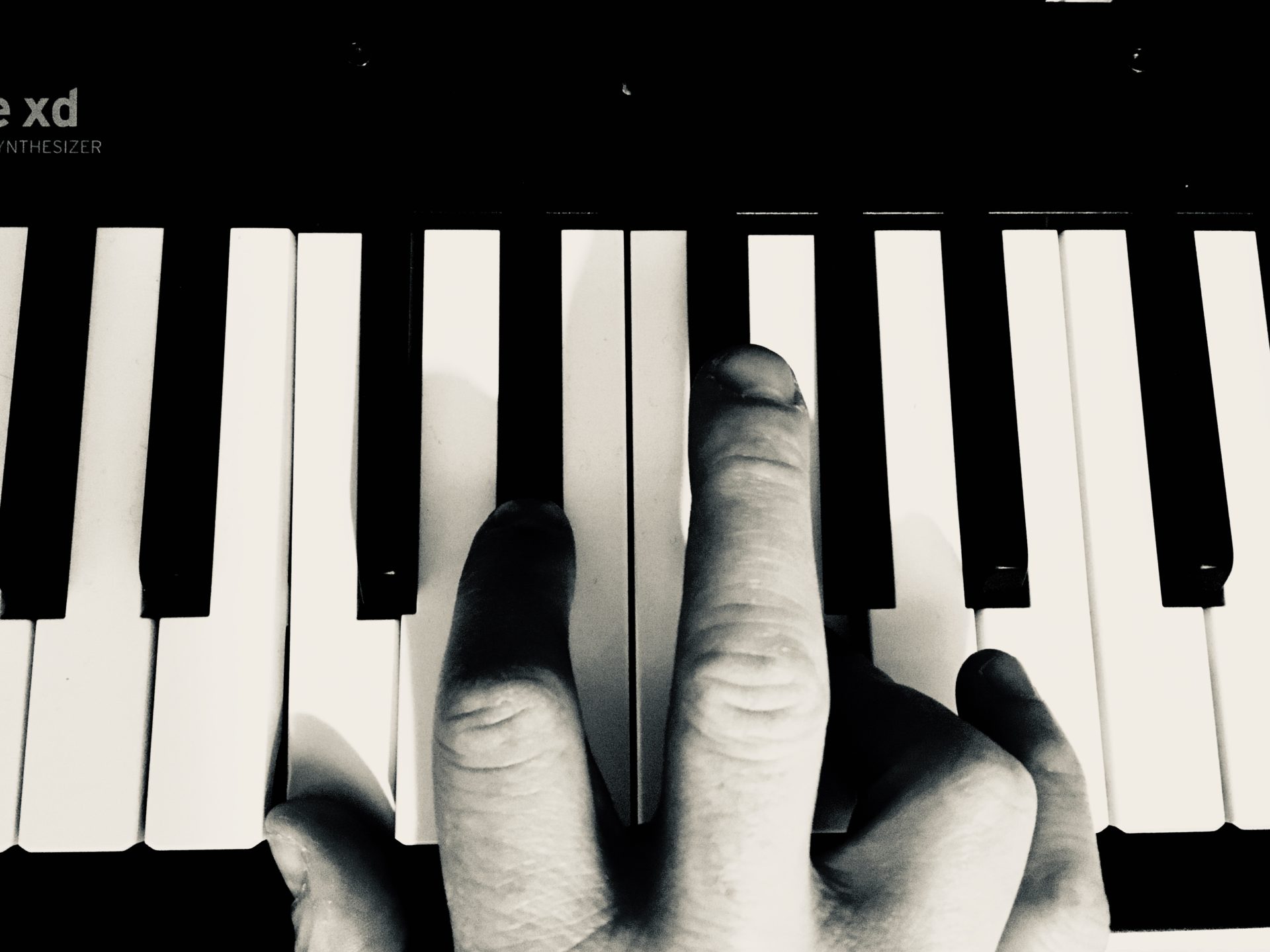
The basic triad of C Minor looks like this:
| Chord | Root | Third | Fifth |
|---|---|---|---|
| C Minor | C | E♭ | G |
And sounds like this:
You can add notes, or ‘complexity’ to this triad and increase the polyphony. These additional notes are called ‘chord tones’. We already have the Root, third and fifth present in the basic triad.
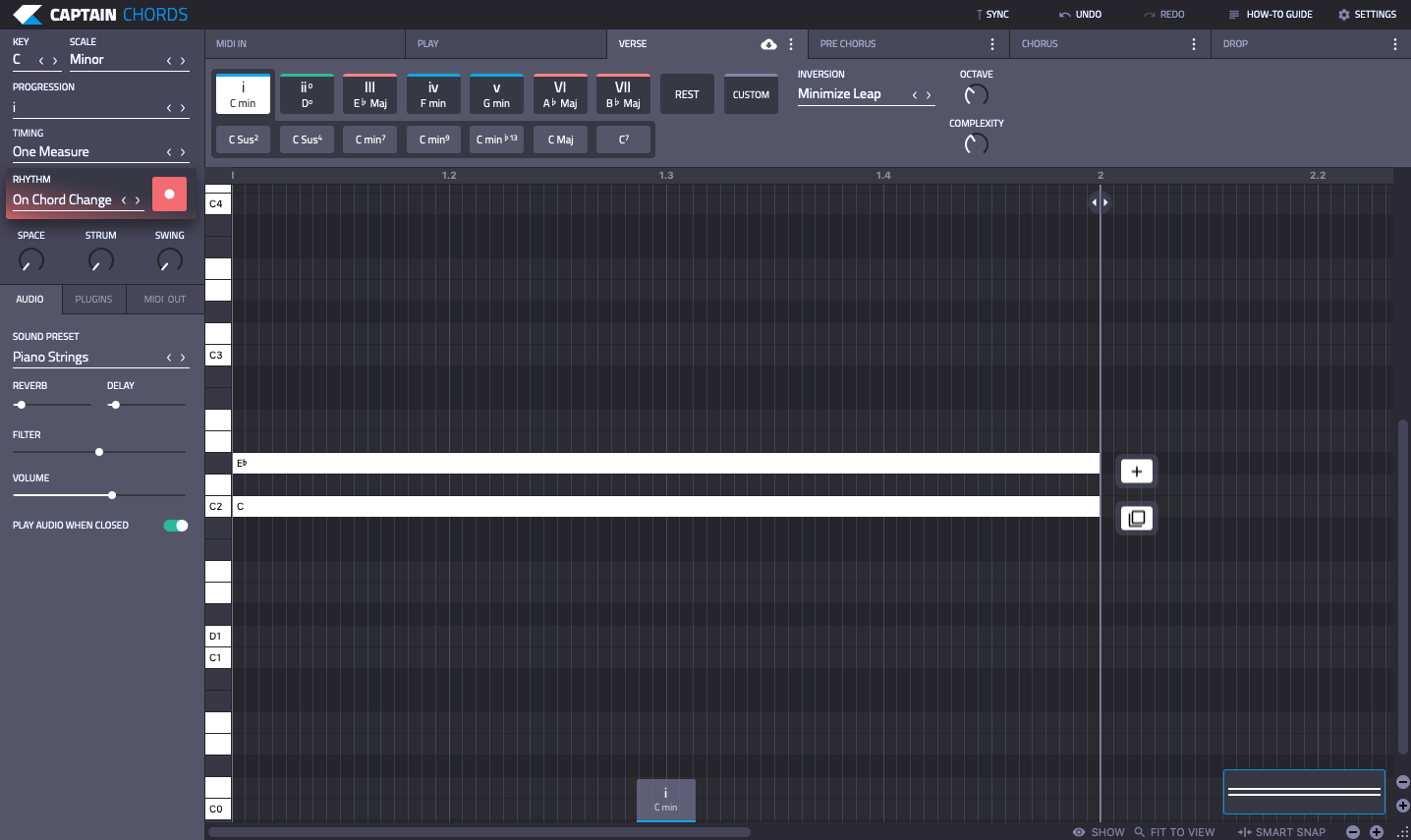
On a piano, a semi-tone step is simply a key up or down from the current key. So, we can count three keys up from C to reach the third – E Flat.
Pro Tip
When playing from one chord to the next, we at Captain Plugins generally try and minimize the leap for a pianist. That means, we try and keep the distances between notes from chord to chord as low as possible.
With 12 notes in a chord, chord tones more than five semitones away can often be accessed with a smaller leap by going down in the scale from the root. That means the pianist’s hand is less stretched when playing a chord progression.
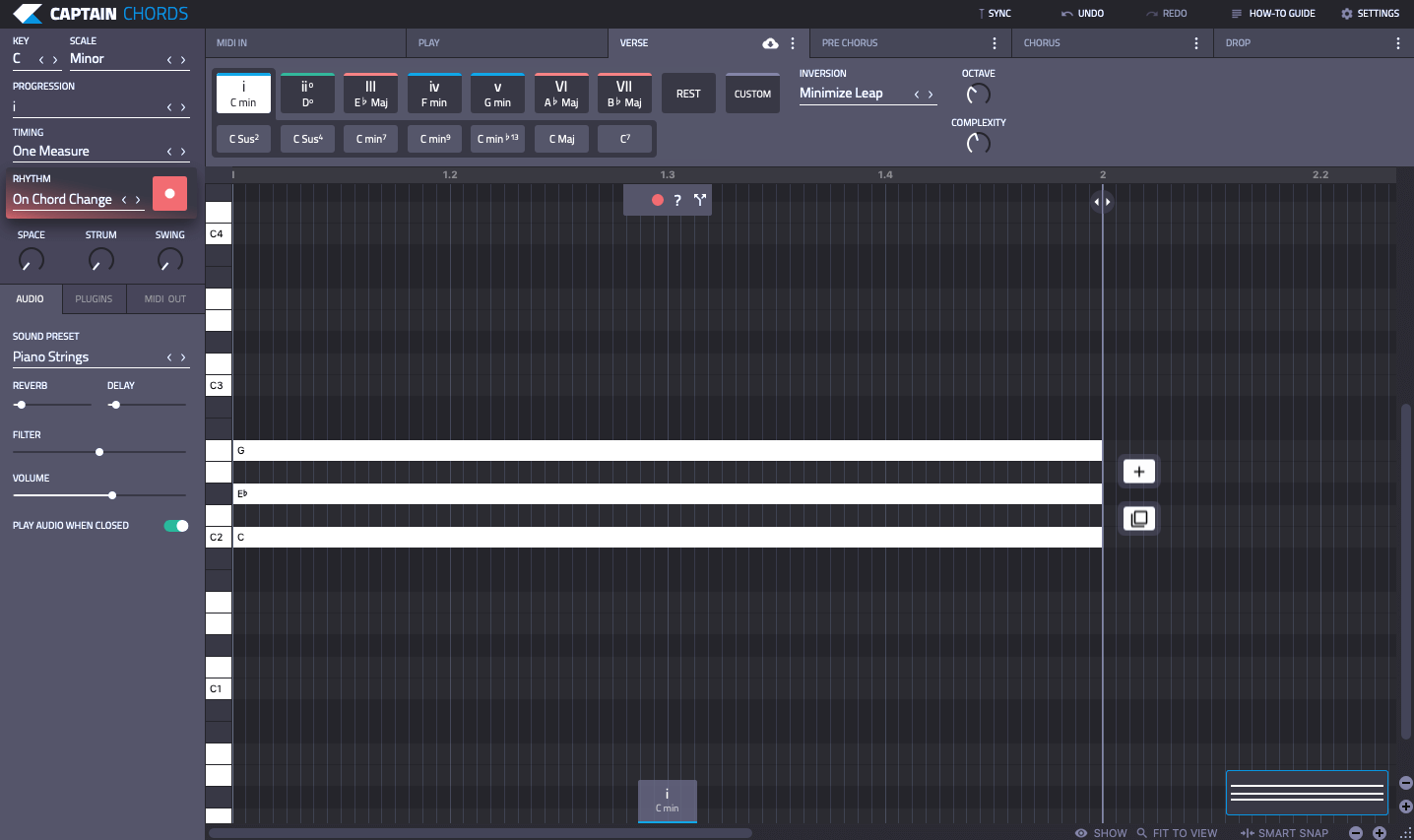
The middle note, or third, is what signifies whether a chord is Major or Minor. The 1st and 5th notes are the over-arching chord tones. Regardless of scale, the 1st and 5th together always signify which chord is being played. Here’s how they sound together in a standard C Minor chord:
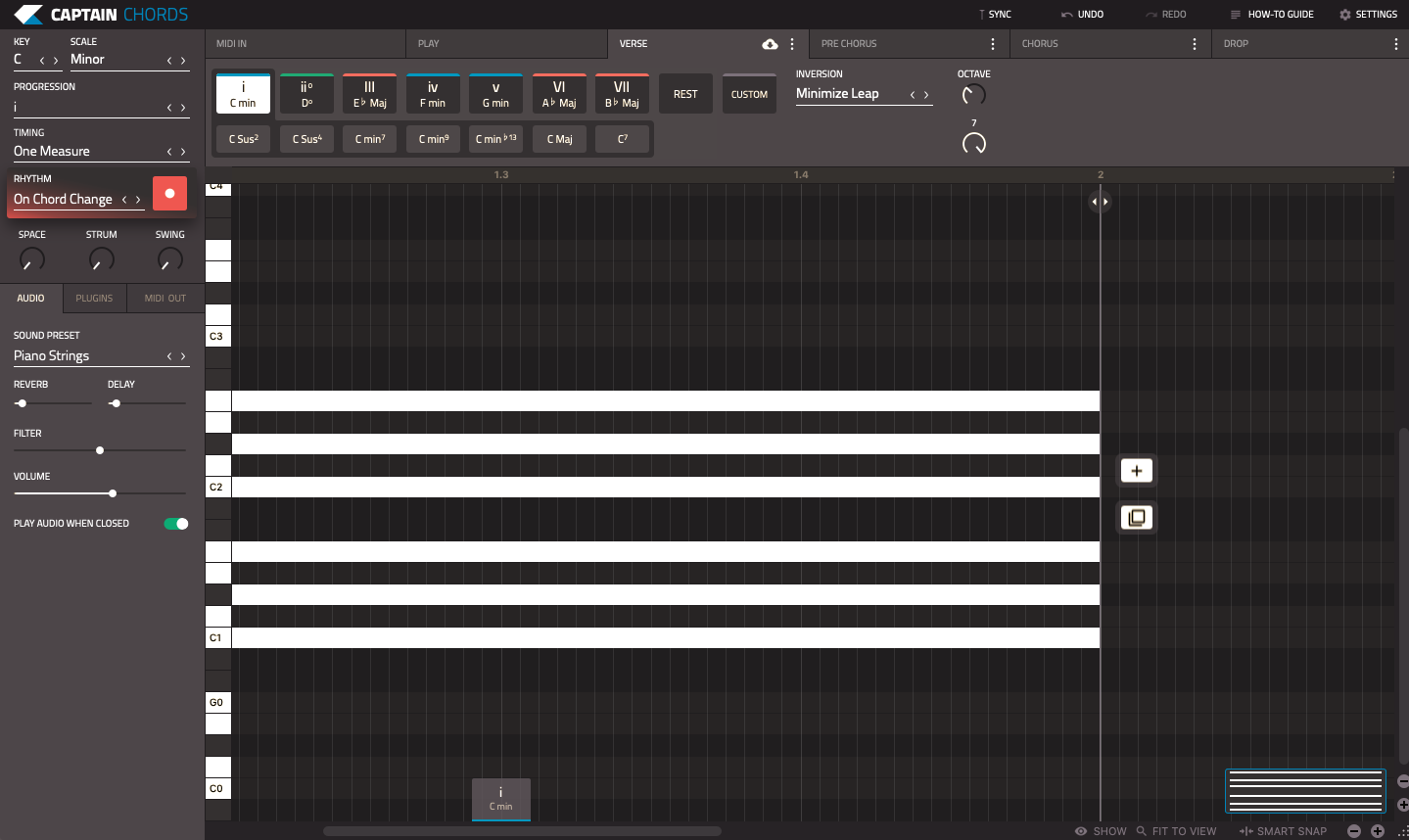
Adding more chord tones to the chord of C Minor is simply about repeating the triad notes in a higher or lower octave.
In Captain Chords, you can generate the chord of C Minor at the touch of a button. You can add complexity too, and even play C Minor (and all the chords in its scale) with one finger!
Write chords faster with Captain Chords
- Write your own chord progressions
- Apply rhythms to your chords
- Set your Key and Scale for the entire song
- Explore different chords and discover your favorite combinations
- Compose music and write your own songs
- One touch plays 3 notes of the chords
Inversions
Remember that an octave is made up of 12 semitones? In the chord of C Minor, the fifth is G. G is 5 semitones down from C, and therefore 7 semitones up from it, too. The lower G is one whole octave below the higher one.
Do you see that this is an example of the same chord with the one played on a different octave? This is a ‘version’ of the root chord – or, as we call it in music theory, an ‘Inversion’. You can choose which ‘version’ of the chord to play. It can seem a bit confusing, at first, but it’s super useful when you get your head around it!
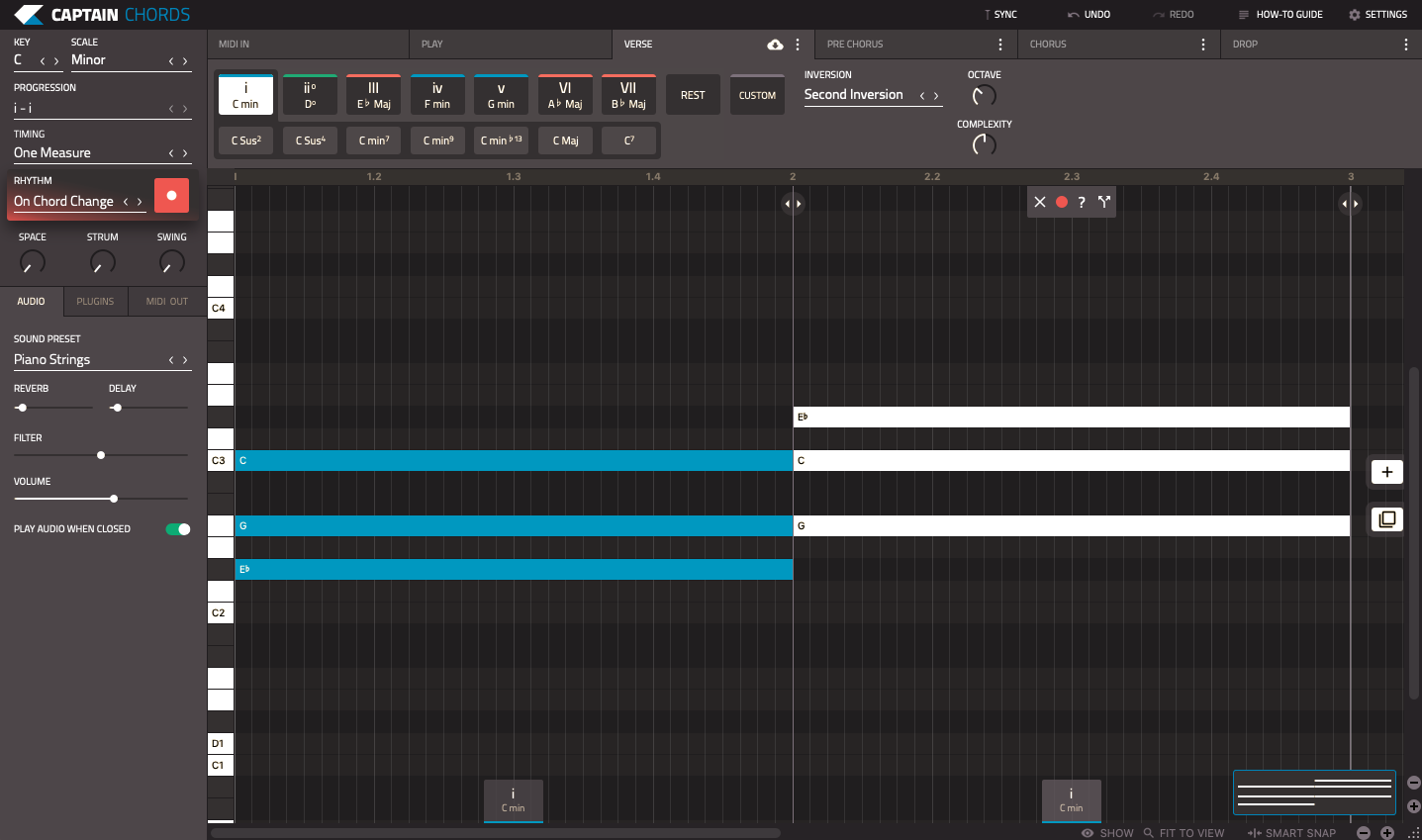
As discussed earlier, ‘inversions’ are ways of playing the same chord but with one or more of the same notes played in a different octave. This has the effect of changing which note is at the root of the chord. For this reason, we call it a ‘voicing’. In the image above, we can see the default triad, 1st inversion and 2nd inversion. The ‘voice leading’ each respective chord is C, G, Eb. Perhaps this is easier to understand in a simple chart:
| Chord | Root | Third | Fifth |
|---|---|---|---|
| Default Triad | C | E♭ | G |
| 1st inversion | Eb | G | C |
| 2nd inversion | G | C | E♭ |
C Minor (1st Inversion):
C Minor (2nd Inversion):
Suspended chords.
Suspended chords AKA ‘sus chords’ are simply regular triads in which the middle note – the third – is moved. If it’s moved down one whole note, it’s a Suspended 2nd, and if it’s moved up one whole note, it’s a Suspended 4th. Each adds a profoundly different character to the sound of the chord.

Cm Sus2.

Cm Sus4.
Here are the two suspended chords of Cm played together:
7th chords.

Cm 7th.
Before we move onto the key of C Minor and how to work in it, a final word on 7th chords. It’s called a 7th, because it adds a note that is 7 notes from the root. For example, you can make a C Minor triad into a C Minor 7th by adding the note 7 notes above C to the Chord. A minor 7th interval is equal to 7 whole notes, which in C Minor is B♭.
There are three other types of 7th chord, created by either using a minor or major 7th note, or a major, minor or diminished root triad. For more information on this, check out our article on composing with 7th chords!
Other Flavors of C Minor.
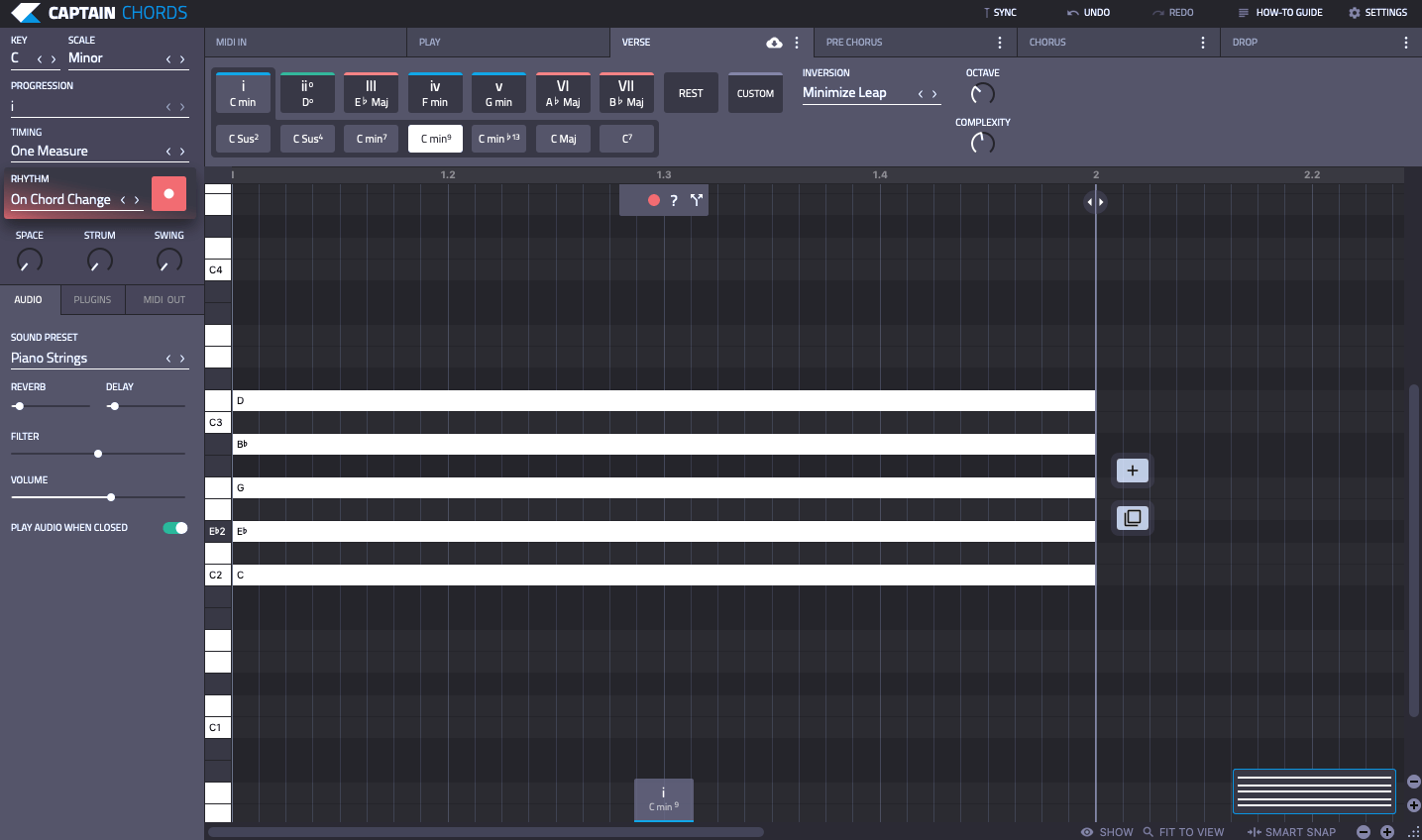
You can continue adding notes to the chord of C Minor. Many musicians call these new chord types ‘flavors’, or the adding of ‘Extensions’. Ultimately, these flavors occur when you add notes outside the ‘triad’ chord tones.
For example, a Cm9 chord is a C Minor 7th chord with another note added, 2 notes up from the 7th in the C Minor scale. So, it’s a Cm7 with an additional D♭:
Flavors are so powerful they can make a one-chord progression sound a lot more interesting:
With Captain Chords, it’s as simple as trying out different voicings from the chord options and seeing what you like!
Write Chords Faster with Captain Chords
- Use Captain Plugins to write your own Chord Progressions, Hooks, Melodies and Basslines
- Export to your DAW
- Available on Mac and Windows.
The key of C Minor and how to use it.
The Diatonic Scale
If you’re thinking “the diet tonic what?”, don’t be alarmed. It’s pretty simple, and amazingly useful. Essentially, when you choose a key and scale, there is a diatonic scale that comes along for the ride. That means, there are other chords that exist in a happy relationship with your root chord. These are chords that, 9 times out of 10, will sound great in combination with your root.
Pro Tip: Scale Degrees.
We call these chords ‘scale degrees’ because they occupy a set position in relation to the root chord. For example, the scale degree 4, AKA ‘the fourth’ in C Minor is F Minor. There are 7 scale degrees in every diatonic scale.
One of the coolest things about Captain Chords is how straightforward it is to access these diatonic chords. They’re literally laid out on a plate for you to choose from. Simply enter any chord from the chord palette at the top of the screen, in a combination of your choice, and marvel at the awesome-sounding chord progression that comes out!
Here’s how the chord palette looks in Captain Chords (with ‘Normal View’) selected:
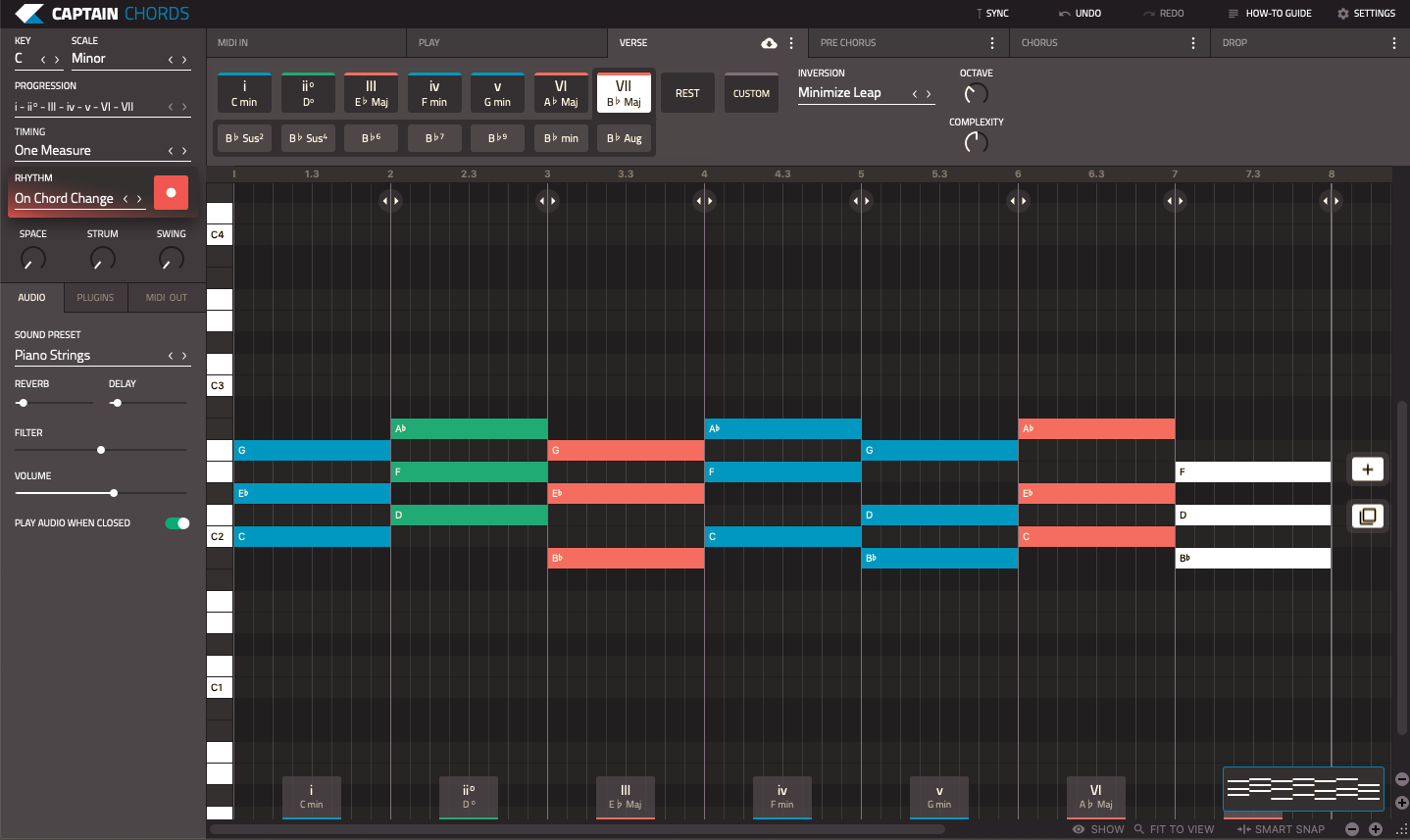
And here’s a chart of the diatonic scale of C Minor:
| Scale Degree | Root | 2nd | 3rd | 4th | 5th | 6th | 7th |
|---|---|---|---|---|---|---|---|
| Chord name | Cm | D Dim | E♭ | Fm | Gm | A♭ | B♭ |
| Roman Numeral | i | ii° | III | iv | v | VI | VII |
A nice chord progression usng the diatonic scale of C Minor:
Borrowed Chords.
Now you know the rules of the diatonic scale of C Minor, you can break them!
While the diatonic chords are guaranteed to sound great together, there are chords outside that palette that can also sound awesome. It really depends on the combination of chords together, and the length of time you spend on a borrowed chord. If you’re just passing over a borrowed chord on your way to a diatonic chord, it can sound great as it adds a little suspense. In reality, you can add any chords you like, it’s just a bit riskier when they’re out of the diatonic scale.
In this jazz-funk song by Deodato, the chord progression is just 3 chords. Two are from the diatonic scale of D Minor, with a passing chord which is ‘borrowed’ from another scale. The chords are Dm, F, Fm. It doesn’t usually sound good mixing a minor and major of the same chord directly, but here it works because we always revert to the satisfying root, D Minor.
Explore the chord and scale of C Minor with Captain Plugins.
It’s super easy to create your own ideas from scratch. Visit the official Captain Plugins homepage and see how it will help you explore music and write your own original productions.
